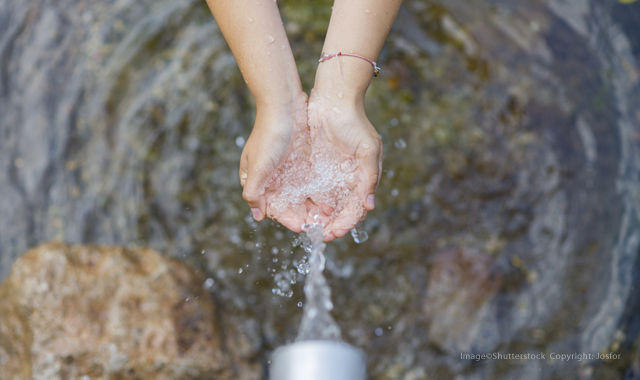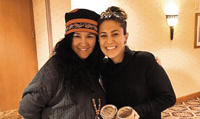Horizontal approaches to improving oral health in rural communities
Dr. Erinne Kennedy discusses some of the health challenges facing rural Alaskan communities.

Recently, I was afforded the opportunity to attend the Water Innovations for Healthy Arctic Homes (WIHAH) in Anchorage, Alaska.1
WIHAH was the first conference of its kind, and I was one of two dentists to attend. My mentor, Dr. Brittany Seymour, Assistant Professor of Oral Health Policy and Epidemiology at Harvard, and I were invited to take part in this interdisciplinary opportunity. This conference brought together the Department of Environmental Conservation of Alaska,

Environmental Protection Agency (EPA), One Artic, the Center for Disease Control (CDC), Artic Research Commission, United States Department of Agriculture by rural development and of course, two dentists under one roof to brainstorm innovative ways to address the impact of climate change on arctic human health.
Our attendance at the conference not only sparked interest in the impact of dental caries in Alaskan native children, but it elicited stories about the magnitude of the burden of oral disease. With a profession full of technology, we sometimes forget one of the first technologies that provided improved health outcomes was clean running water. In Anchorage, we were able to participate in conversations around water fluoridation, water borne and washed diseases, and the impact of water insecurity on overall health.
Related: How a dental hygienist started her own non-profit organization
Water insecurity
You might ask, what is water insecurity? Simply put, water insecurity is the human experience of not knowing where your water is going to come from. Can you imagine not knowing when you were going to get your next glass of water? Or how you were going to wash your clothes? And not knowing when your next opportunity would be to take a shower, or even brush your teeth? For me, the idea of water insecurity was mind-boggling.
According to the World Health Organization (WHO), there are five factors that influence water insecurity: amount, distance, time, quality and affordability.
In some areas of Alaska, they have less than 13.2 gallons per person per day, and when they are able to receive water they have to haul water for more than 100 meters which can take 30 minutes to a few hours.2 But the difficulty doesn’t stop there-many times their water is full of minerals, making it unpalatable and expensive. By definition, not only do areas of rural Alaska suffer from water insecurity, but they also have increased health disparities as a result.
Related: Addressing the gap in dental delivery care for all Americans
Health disparities can be a product of poor water quality or minimal water quantity. Poor water quality is due to contamination from bacteria or viruses consequently producing water borne disease. Water insecurity leads to lower quantities of water, producing water-washed diseases.
Water-washed diseases are an outcome from an inability to maintain proper hygiene, which results in bacterial skin infections, respiratory infections and diseases such as dental caries.
Astoundingly, 40 percent of rural Alaskan children under the age of five have been hospitalized for full mouth rehabilitation under sedation due to dental infections.
Up next: What are some solutions to this problem?
What can be done?
The impact of oral diseases and common risk factors for disease is apparent; a focus on prevention, health promotion and an interdisciplinary approach are integral parts of changing the disease burden of oral health in rural communities. Horizontal approaches to community change include capacity building, and infrastructure development is another cornerstone needed to create healthy Alaskan communities. Infrastructure development includes developing the systems and workforce needed to provide running water.

What is capacity building? The goal of capacity building is empowering communities to gain knowledge, understand the data and apply the information in order to solve their own community’s problems in a sustainable and targeted way. In the case of western Alaska, the WIHAH conference invited community leaders to participate, learn about the issues facing their land and see current pilot innovations. The Kivalina project, for instance, is a pilot project that has been implemented in nine Arctic homes, and it is a self-contained fresh water and toilet system that provides clean running water and sanitation to homes without an underground piping system.
More on health: Nutritional supplements combat the effects of periodontal disease
The beauty of this conference was that community members were able to ask questions, spark conversation, review the pros and cons of these pilot systems and give feedback to engineers about what works in their homes.
Climate change creates challenges in simply maintaining the current regulations, and adapting to the changing landscape. The impact of climate change on infrastructure is costly. Every year the temperature is changing in Alaska, which results in melting permafrost. This changes not only the existing landscape and the stability of the soil, but also the existing infrastructure.
In addition to physical infrastructure, each water treatment facility has to have staff that meets state requirements, which can be difficult in rural communities. Changing the education to provide enough manpower to continue to provide running water existing piping systems is a pertinent next step.
Conclusions
Changing the burden of oral health in Alaska has to start with technology aimed at providing clean running water in these rural communities.
Making horizontal changes such as this, has demonstrated improved health care costs by leading to fewer absences from work, increased labor earnings, and increased attendance and performance in school.3
It was an amazing experience to participate in a conference focused on collaboration in order to change communities and health in groups-like Alaska’s rural arctic and subarctic populations-that face water insecurity due to climate change.
2. Adapted from Sphere. Also see WHO, 2011. Guidelines for drinking-water quality, 4th edition. World Health Organization, Geneva. http://www.who.int/water_sanitation_health/publications/2011/dwq_guidelines/en/
3. Thomas, T. K., Ritter, T., Bruden, D., Bruce, M., Byrd,., Goldberger, R., . . . Hennessy, T. (2015). Impact of providing in-home water service on the rates of infectious diseases: Results from four communities in Western Alaska. Journal of Water and Health, 14(1), 132-141. doi:10.2166/wh.2015.11